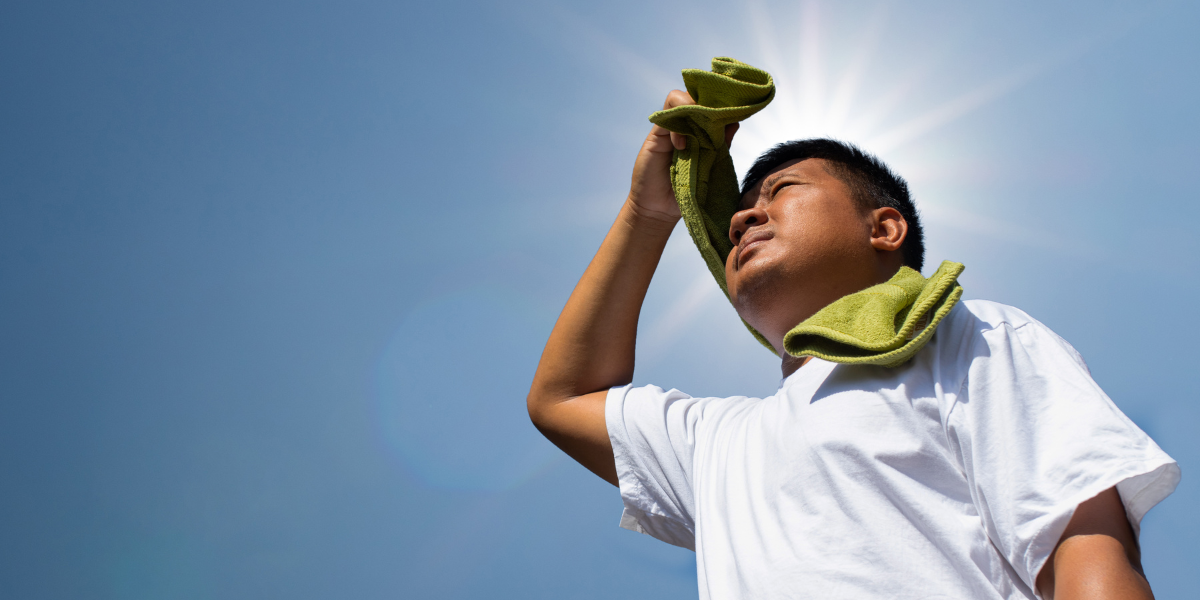Heat-related conditions can escalate quickly from mild discomfort to life-threatening emergencies, so understanding of symptoms is key.

Heat-related illnesses - Representational image. (Getty Images)
With a scorching heat wave sweeping across Karnataka, the state’s Health Department has reported at least 569 cases of heat-related illnesses.
These include 367 cases of heat rash, 131 instances of heat cramps, 70 cases of heat exhaustion, and one case of heat stroke.
Speaking to South First, Dr Gopal N, a physician from Bagalkot, Karnataka, emphasised the critical nature of these statistics.
“The numbers reflect a concerning trend. Heat-related conditions can escalate quickly from mild discomfort to life-threatening emergencies. However, heat stroke and heat exhaustion are distinct, and people should be aware of when to seek immediate help if they feel uncomfortable,” he warned.
Meanwhile, Dr Aditya S Chowti, a senior consultant in internal medicine at Fortis Hospital, expressed concern to South First about the sweltering summer heat’s impact on public health, noting a surge in illnesses nationwide.
“As temperatures soar to extreme levels, reaching well above 40 degrees Celsius in many regions, individuals are increasingly vulnerable to a variety of heat-related ailments,” he said.
Explaining heat rash, which was seen in 367 cases in Karnataka with temperatures soaring to 43° C in some places, Gopal elaborated, “Heat rash, also known as prickly heat or miliaria, occurs when the sweat ducts in the skin become blocked, preventing sweat from escaping to the surface to evaporate. This inflammation results in a rash, more common in hot, humid conditions.”
Symptoms of a heat rash include:
How can one prevent heat rash? Gopal suggested:
In most cases, a heat rash resolves on its own when the skin is cooled down. However, if the rash doesn’t go away or you notice signs of infection like increased pain, swelling, redness, or warmth around the rash, seeking medical help is advisable.
Chowti explained that prolonged exposure to high temperatures can lead to heat exhaustion. characterised by symptoms such as weakness, dizziness, nausea, and headache.
It’s one of the heat-related syndromes that range in severity from mild heat cramps to heat exhaustion.
Symptoms of heat exhaustion include:
Understanding the symptoms of heat-related illnesses can be lifesaving. “Heat cramps are often the first sign, marked by muscle spasms and heavy sweating,” Dr Gopal explained to South First. “If left unchecked, this can progress to heat exhaustion.”
Heat stroke, a more severe condition, can occur when the body’s temperature regulation system fails, warned Dr Chowti. It can lead to potentially life-threatening consequences if left untreated, he added.
“Symptoms include high body temperature, absence of sweating, and confusion,” explained Dr Gopal. He emphasised the need for immediate medical attention if these signs occur.
In Karnataka, there has been only one case of heat stroke — an 85-year-old man from Mysuru district.
Besides general advice to drink more water and stay indoors, doctors warn against leaving anyone in a parked car, especially children and animals, “as the temperature in your car can rise in just 10 minutes”.
At the first signs of heat illness, it’s crucial to move to a cooler location, rest, and hydrate. If a heat stroke is suspected, immediate medical help should be sought, and first aid measures should be initiated to cool the person down while awaiting emergency treatment, such as moving them to a shaded or air-conditioned place and applying cool, wet cloths or ice packs.
(Edited by Kamna Revanoor)

May 01, 2024

May 01, 2024

May 01, 2024

May 01, 2024

May 01, 2024

May 01, 2024